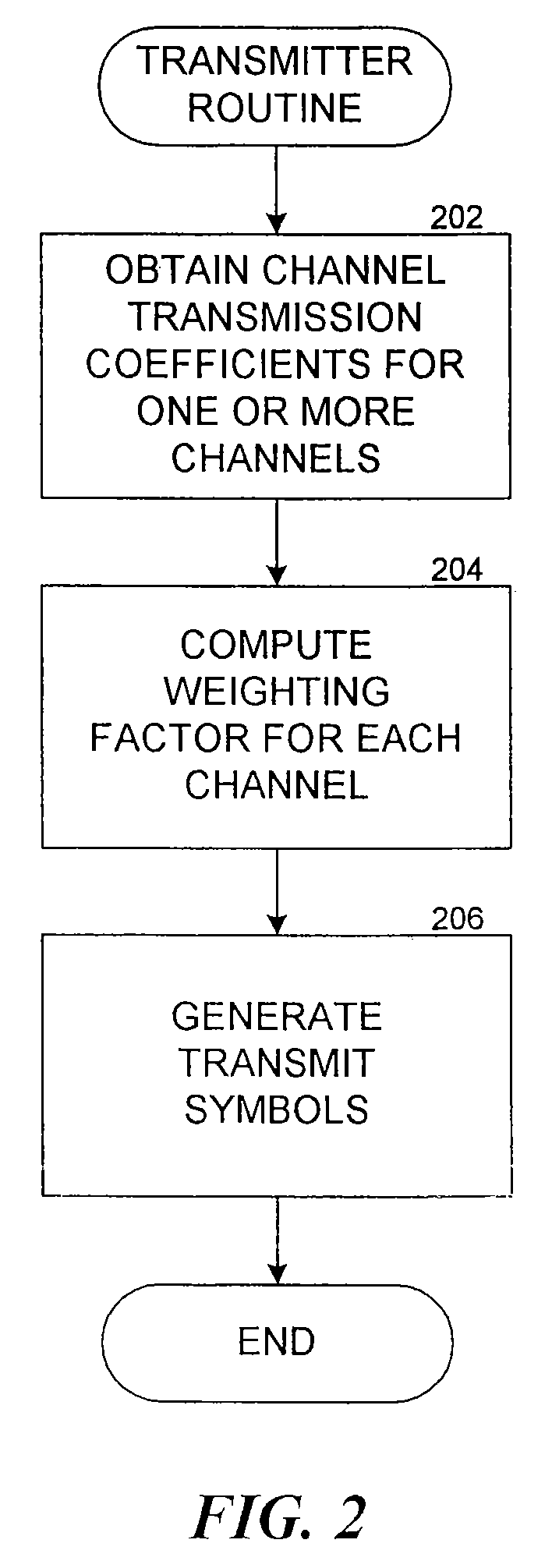Maximum ratio transmission
a transmission and maximum ratio technology, applied in the field of maximum ratio transmission, can solve the problems of adverse propagation effect, wireless communication system suffer multipath fading, all wireless communications services are subject to the vagaries of propagation environment, etc., and achieve the effect of improving performan
- Summary
- Abstract
- Description
- Claims
- Application Information
AI Technical Summary
Benefits of technology
Problems solved by technology
Method used
Image
Examples
Embodiment Construction
[0012]FIG. 1 depicts a system which comprises K antennas for transmission and L antennas for reception. The channel between the transmit antennas and the receive antennas can be modeled by K×L statistically independent coefficients, as shown in FIG. 1. It can conveniently be represented in matrix notation by
[0013]H=[h11⋯h1K⋮⋰⋮hL1⋯hLK]=[h1⋮hL](1)
where the entry hpk represents the coefficient for the channel between transmit antenna k and receiver antenna p. It is assumed that the channel coefficients are available to both the transmitter and receiver through some means, such as through a training session that employs pilot signals sent individually through each transmitting antenna (see block 202 of FIG. 2 and block 302 of FIG. 3). Since obtaining these coefficients is well known and does not form a part of this invention, additional exposition of the process of obtaining the coefficients is deemed not necessary.
[0014]The system model shown in FIG. 1, and also in the routines of FIG...
PUM
 Login to View More
Login to View More Abstract
Description
Claims
Application Information
 Login to View More
Login to View More - R&D
- Intellectual Property
- Life Sciences
- Materials
- Tech Scout
- Unparalleled Data Quality
- Higher Quality Content
- 60% Fewer Hallucinations
Browse by: Latest US Patents, China's latest patents, Technical Efficacy Thesaurus, Application Domain, Technology Topic, Popular Technical Reports.
© 2025 PatSnap. All rights reserved.Legal|Privacy policy|Modern Slavery Act Transparency Statement|Sitemap|About US| Contact US: help@patsnap.com



